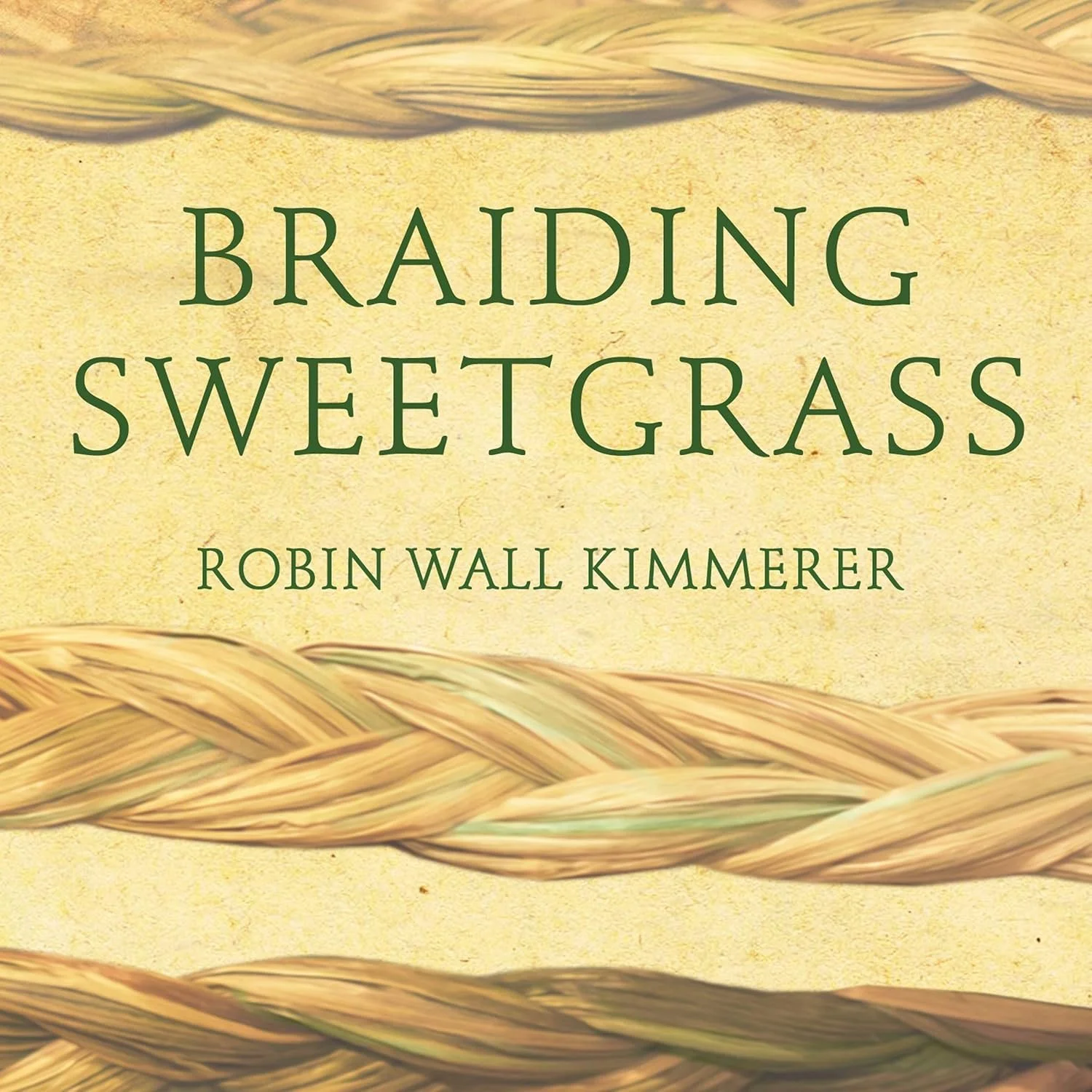If You Like Braiding Sweetgrass…
I listened to Braiding Sweetgrass: Indigenous Wisdom, Scientific Knowledge and the Teachings of Plants by Robin Wall Kimmerer (2013) as an audiobook (narrated by the author) and the 16 hours flew by. I was enraptured by the descriptions of the natural world, Indigenous culture, and scientific knowledge. Kimmerer is able to bridge the worlds of scientific training and cultural traditions as she is clearly steeped in both. This book made me want to lie on the ground next to Kimmerer gazing at moss, which is saying A LOT because generally I’m reluctant to go outdoors any more than required.
The books below are a mix of ones that bring further Indigenous stories to life and celebrate the world of nature. Included are a number of important books that tell the stories of the Indian boarding schools, where so many Native kids were forced to attend to their detriment.
Fatty Legs by Margaret-Olemaun Pokiak-Fenton, Christy Jordan-Fenton, and Liz Amini-Holmes (2010)
This is the story of Margaret-Olemaun and the time she spent at a boarding school for Indigenous children. These schools were created to strip Native American children of their identities and assimilate them into a Christian/white world. For many, the experience was traumatic and devastating. Margaret-Olemaun’s story remains a little lighter, which is appropriate for middle-grade readers. She is punished for her independent spirit and suffers from being away from her family and their traditions. She also finds a sympathetic adult who helps her tolerate her time at the school.
The Overstory by Richard Powers (2018)
If Braiding Sweetgrass made you want to head to the nearest forest, pick up this amazing novel all about the lives of trees. This is a hefty and sweeping story that focuses on nine characters over decades of time. There is an immigrant who plants chestnuts trees after he moves to the U.S. There are college students who are protesting the destruction of the forests. There are scientists who uncover the world of communication between plants.
Firekeeper’s Daughter by Angeline Boulley (2021)
Daunis is the daughter of a Native father and a white mother. She lives on Sugar Island off the Upper Peninsula of Michigan and loves hockey and chemistry. When Daunis witnesses a murder, she reluctant agrees to go undercover to help take down a drug ring. Boulley does an amazing job balancing Daunis’s coming of age story with a mystery while weaving in the elements of the Indigenous culture that defines Sugar Island. Beautifully written and hard to put down. Boulley is an enrolled member of the Sault Ste. Marie Tribe of Chippewa Indians.
Warrior Girl Unearthed by Angeline Boulley (2023)
A companion novel to Firekeeper’s Daughter, this book by Boulley focuses on Daunis’s niece Perry. Perry’s been strong-armed into an internship for the summer. Despite her initial hesitation, she is moved by the cultural artifacts she sees in museums and private collections and vows to bring them back to her community. As in Firekeeper’s Daugher, Boulley inserts mystery as well: a character familiar from the first book is killed and young native women are going missing. Perry wants to become a warrior for her people — to do the things that others won’t.
Greenwild series by Pari Thomson (started 2023)
I included this middle-grade book because of its botanical details and whimsy and how it made me think deeply about plants and the magic that they naturally contain. Daisy and her journalist mother never stay any one place for long, but that’s okay as long as they are together. When her mother disappears on a dangerous assignment, Daisy is determined to find her. The search leads her to a secret world of botanical magic, one Daisy apparently belongs to. Thomson creates charming characters, wicked villains, and fun plant magic.
Stealing Little Moon: The Legacy of the American Indian Boarding Schools by Dan SaSuWeh Jones (2024)
Jones tells of the many generations of his family who experience life at Chilocco, a federal boarding school for Indigenous kids. Though the events are upsetting and unsettling, it is an important history to bring to light. Four generations of the author’s family have connections to the school, from Little Moon’s arrival when the school was opening to working on the maintenance crew in the years when the facility was shutting down.
